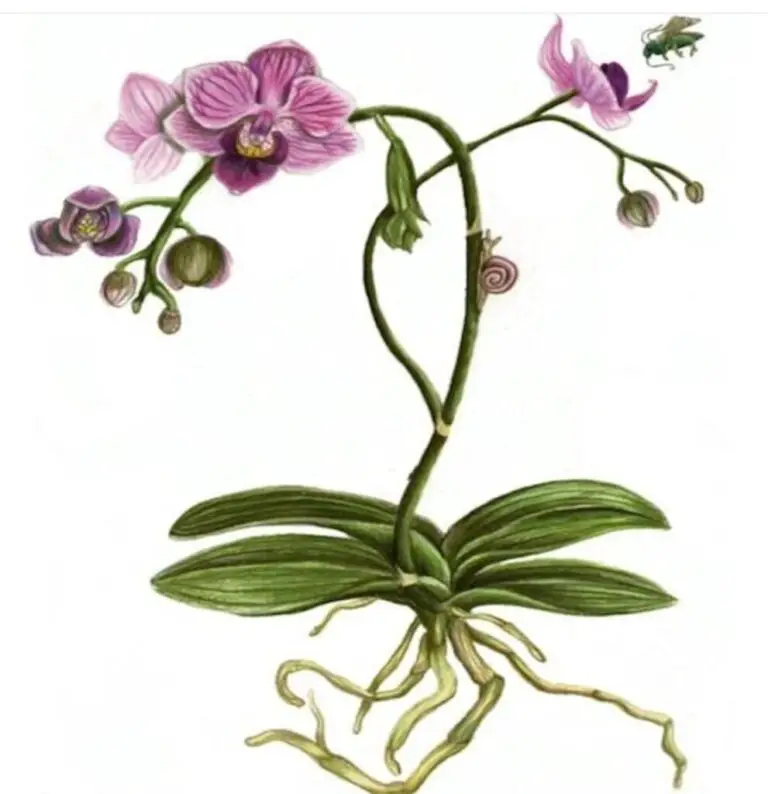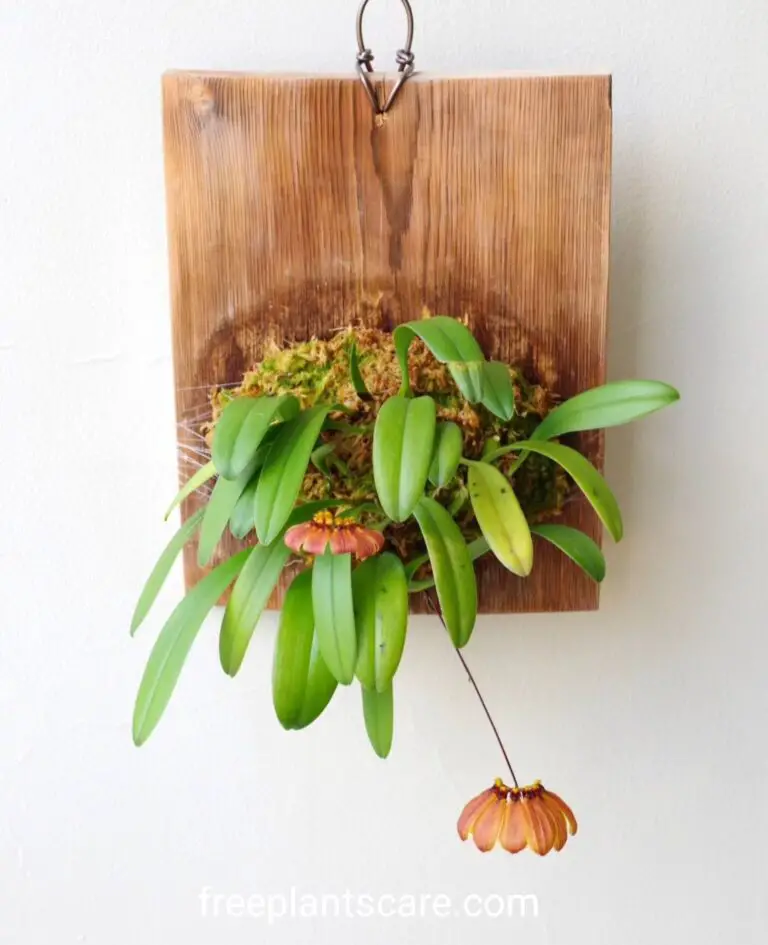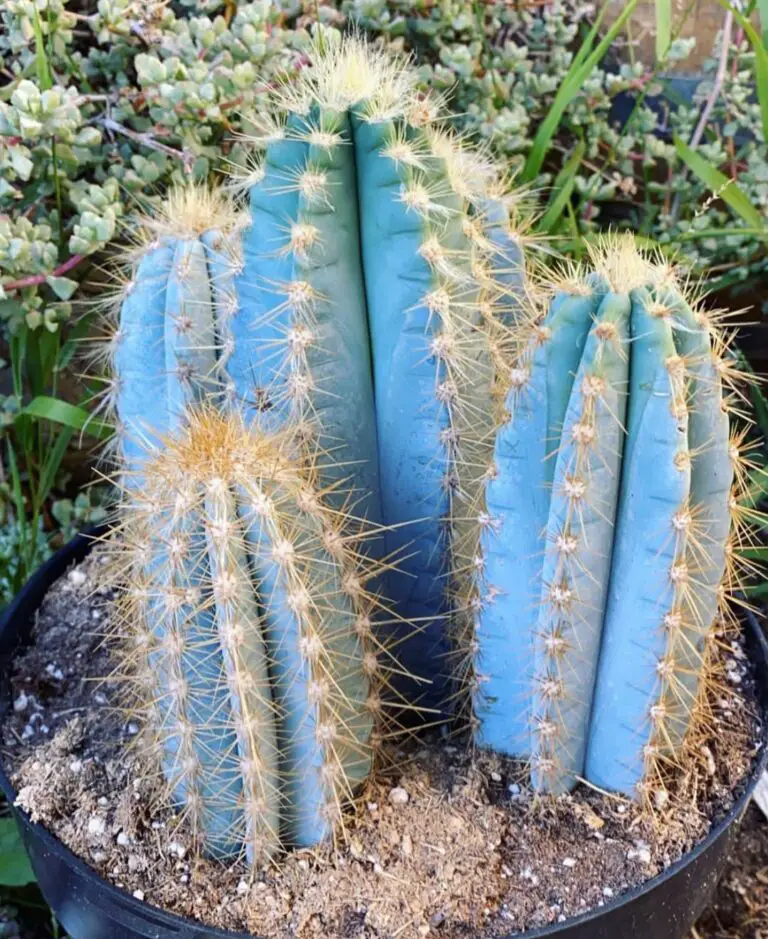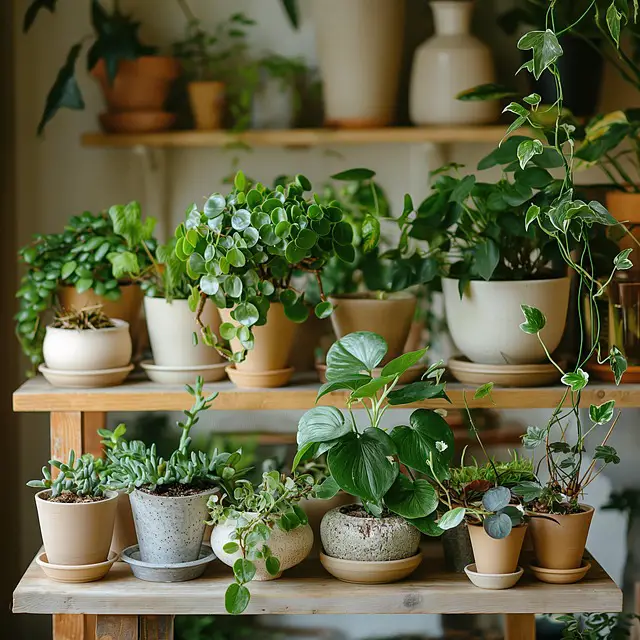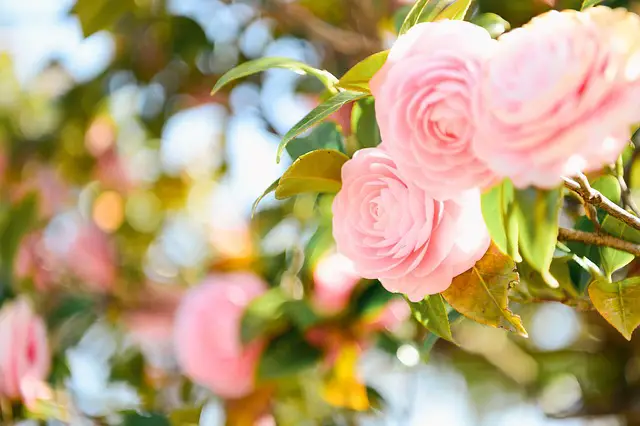- 1 yellow oncidium orchid care
- 2 light.
- 3 Soil
- 4 Water
- 5 Temperature and Humidity
- 6 Fertilizer
- 7 Propagating yellow Oncidium orchids
- 8 How to Grow Yellow Oncidium Orchids from Seed
- 9 Potting and repotting yellow Oncidium orchids
- 10 Repotting yellow oncidium orchids
- 11 Winter yellow Oncidium orchid care
- 12 Yellow Oncidium orchids, common pests and plant diseases, and cures.
- 13 Some common problems
- 14 How to get yellow Oncidium Orchids to Bloom
- 15 FAQ
The yellow oncidium orchid is a member of the Oncidium genus, which includes over 300 different species of orchids. These plants are native to tropical regions of Central and South America and are known for their intricate flowers and ability to thrive in warm, humid environments. While they may seem intimidating to care for, with a little bit of knowledge and attention, anyone can successfully grow a yellow oncidium orchid.

One of the most important things to keep in mind when caring for a yellow oncidium orchid is that they require bright, indirect light. This means that they should be placed near a window that receives plenty of sunlight, but not directly in the path of the sun’s rays. Too much direct sunlight can cause the leaves to burn, so it’s important to find a spot that strikes the right balance.
Oncidium orchids, like the light variant, require routine watering to stay healthy. It’s crucial not to overwater them, too, as this might result in root rot and other issues. Between watering sessions, the potting mix should be given a little time to dry out. It’s also crucial to check that the pot has good drainage to avoid water pooling at the bottom.
To keep your yellow oncidium orchid looking its best, you’ll also need to fertilize it regularly and repot it every few years as the potting mix begins to break down. Additionally, you’ll need to be on the lookout for pests and diseases that can affect orchids, such as spider mites and fungal infections.
By following the tips and techniques outlined in this guide, you’ll be well on your way to growing a healthy, thriving yellow oncidium orchid that will delight you with its stunning blooms for years to come.
yellow oncidium orchid care
Yellow Oncidium orchids are stunning flowers that require some specific care to keep them healthy and blooming. These orchids thrive in bright, indirect light and prefer temperatures between 65 and 80 degrees Fahrenheit during the day. Adequate humidity is also crucial for their well-being, so consider using a humidifier or placing a tray of water near the plant. Watering should be done once a week, allowing excess water to drain, and fertilizing every two weeks during the growing season is recommended. With proper care, your yellow Oncidium orchid will continue to flourish and delight you with its beautiful blooms .
light.
Oncidium orchids require bright, indirect light to thrive. Ideally, they should be placed near a south-facing window, where they can receive plenty of light without being exposed to direct sunlight. Direct sunlight can cause the leaves to burn and the flowers to wilt. If you don’t have a south-facing window, you can also use artificial lights to provide the necessary light for your orchids. Overall, it’s important to ensure that your yellow Oncidium orchids receive enough light, as insufficient light can lead to poor growth and a lack of blooming.
Soil
Yellow Oncidium orchids require a well-draining soil mix that allows air to circulate around the roots. A common soil mix for orchids is composed of bark, sphagnum moss, and perlite, which provides good drainage and aeration. It’s important to avoid using regular potting soil, as it can hold too much moisture and suffocate the roots. Additionally, the potting mix should be slightly acidic, with a pH between 5.5 and 6.5. When repotting your yellow Oncidium orchid, choose a pot that is only slightly larger than the current one, as too much space can lead to overwatering and root rot. Overall, using a well-draining, slightly acidic soil mix is essential for the health and growth of your yellow Oncidium orchids.
Water
Yellow Oncidium orchids require a moderate amount of water, and it’s important to avoid overwatering, as this can lead to root rot. As a general rule, water your orchid once a week or when the top inch of the potting mix feels dry to the touch. When watering, use room temperature or lukewarm water and water thoroughly, allowing excess water to drain from the bottom of the pot. It’s important to avoid getting water on the leaves or flowers, as this can cause spotting or damage. In addition, it’s a good idea to reduce watering during the winter months when the plant is dormant. Overall, proper watering is key to keeping your yellow Oncidium orchid healthy and happy.
Temperature and Humidity
Yellow Oncidium orchids thrive in warm and humid conditions, similar to their natural habitat in tropical regions. The ideal temperature range for these orchids is between 65 and 80 degrees Fahrenheit during the day and 55 and 65 degrees Fahrenheit at night. It’s important to avoid exposing them to extreme temperatures, as this can harm the plant.
In terms of humidity, yellow Oncidium orchids require moderate to high levels of humidity, around 50–70%. You can increase humidity levels by using a humidifier or placing a tray of water near the plant. Misting the leaves with water can also help, but be sure to do it in the morning so the leaves have time to dry before evening. Dry air can cause the leaves and flowers to dry out and wither, so maintaining adequate humidity levels is important for the health and growth of your yellow Oncidium orchid.
Fertilizer
It’s crucial to fertilise yellow Oncidium orchids in order to provide them the nutrients they require for strong development and flowering. Use a balanced fertiliser every two weeks during the growing season (spring and summer). Use a fertiliser made specifically for orchids or a general-purpose fertiliser with an equal mix of nitrogen, phosphorus, and potassium (NPK). Throughout the winter, fertiliser should only be done once a month.
When applying fertilizer, make sure to dilute it to half strength, and apply it to damp soil to avoid burning the roots. You can also use a slow-release fertilizer, which releases nutrients over time and reduces the risk of over-fertilizing. Be careful not to over-fertilize, as this can lead to salt buildup and damage the plant.
In summary, fertilizing yellow Oncidium orchids regularly with a balanced fertilizer during the growing season and reducing the frequency during the winter months is essential for promoting healthy growth and blooming.
Types of Oncidium Orchids
Oncidium is a diverse genus of orchids with over 300 species and countless hybrids. Here are some of the types of Oncidium orchids:
Oncidium is a diverse genus of orchids with over 300 species and countless hybrids. Here are some of the types of Oncidium orchids:

Oncidium Sharry Baby: Also known as the chocolate orchid, this popular hybrid has a sweet fragrance that resembles the scent of chocolate.

Oncidium Twinkle: This miniature orchid produces clusters of small, bright yellow flowers on compact plants.

Oncidium Gower Ramsey: A popular hybrid that produces sprays of bright yellow flowers with a red center.

Oncidium Papilio: Known as the butterfly orchid, this species produces large, showy flowers with distinctive wing-like petals.

Oncidium sphacelatum: A species native to South America, this orchid produces large, yellow flowers with red markings.

Oncidium goldiana: This species produces long, arching sprays of yellow flowers with a red and brown center.
Oncidium flexuosum: A Brazilian species that produces sprays of small, fragrant flowers in shades of yellow and brown.

Oncidium pulvinatum: A dwarf species that produces small, yellow flowers on short stems.

Oncidium ornithorhynchum: A rare species from Colombia and Ecuador with unusual, bird-like flowers

Oncidium leucochilum: This species produces fragrant white flowers with a bright yellow center.
Pruning the Yellow Oncidium Orchid:
Yellow oncidium orchids might benefit from the quick and easy pruning method because it can foster new growth and flowering. The steps you can take are as follows:
Wait until the orchid has finished flowering and the flowers have fallen off.
Look for any dead, damaged, or yellow leaves. These can be removed by gently pulling them away from the stem. Use a clean, sharp pair of scissors or pruning shears to make a clean cut near the base of the leaf or stem.
Check for any dead or brown roots. These can be removed as well by gently pulling them away from the potting mix. Healthy roots should be firm, plump, and green or white in color.
If the orchid has grown too large for its pot, you may need to divide it into smaller sections. Carefully remove the plant from its pot and separate the roots into smaller clumps. Make sure each clump has several healthy leaves and roots before repotting.
Once you have finished pruning, be sure to water the orchid thoroughly and place it back in a well-lit area. Avoid direct sunlight and extreme temperatures.
By following these steps, you can help keep your yellow oncidium orchid healthy and encourage it to produce new growth and flowers.
Propagating yellow Oncidium orchids
Oncidium orchids can be propagated through division or stem cuttings.
Propagation through Division:
Wait until the orchid has finished flowering and the flowers have fallen off.
Carefully remove the plant from its pot and separate the roots into smaller clumps. Make sure each clump has several healthy leaves and roots.
Trim any damaged or dead roots with a clean, sharp pair of scissors or pruning shears.
Pot each division into a separate pot using a well-draining orchid potting mix.
Water the newly potted orchids and place them in a well-lit area, avoiding direct sunlight and extreme temperatures.
Propagation through Stem Cuttings:
Identify a healthy stem that has not yet flowered. Cut the stem with a clean, sharp pair of scissors or pruning shears, making sure the cut is at least 3–4 inches long and has several nodes.
Dip the cut end of the stem in rooting hormone powder and shake off any excess.
Plant the cutting in a small pot filled with a well-draining orchid potting mix.
Water the cutting and place it in a warm, humid location with bright, indirect light.
Keep the potting mix moist and mist the leaves of the cutting regularly to maintain humidity.
Within a few weeks, the cutting should start developing roots and new growth.
By following these steps, you can successfully propagate yellow Oncidium orchids and grow new plants.
How to Grow Yellow Oncidium Orchids from Seed
Growing yellow Oncidium orchids from seed can be a rewarding experience for orchid enthusiasts. Here are the steps you can follow to grow yellow Oncidium orchids from seed:
Obtain fresh seed pods: Look for mature yellow Oncidium orchids that have recently produced seed pods. Harvest the pods when they turn brown and split open.
Clean the seeds: Rinse the seeds with water to remove any residual fruit or debris. Soak them in a 10% bleach solution for 5–10 minutes to disinfect them.
Prepare a sterile growing medium: Use a commercial orchid mix or make your own using materials such as sphagnum moss, perlite, and bark. Sterilize the medium in an oven at 250°F for 30 minutes to kill any pathogens.
Sow the seeds: Place the sterilized medium into small pots or seed trays. Sprinkle the seeds on top of the medium, but do not cover them with soil as they need light to germinate.
Provide the right environment: orchid seeds need warm and humid conditions to germinate. Cover the pots with plastic wrap to create a greenhouse effect and place them in a bright, warm spot, such as near a window or under grow lights. The ideal temperature range for yellow Oncidium orchid seeds is 75°F–85°F (24°C–29°C).
Water carefully: Keep the growing medium moist but not soggy. Use a spray bottle to mist the seeds and medium several times a day to maintain humidity. Do not allow the medium to dry out or become waterlogged.
Wait for germination: It can take several weeks to several months for yellow Oncidium orchid seedlings to germinate. Be patient and keep the growing environment stable.
Transplant the seedlings: When the seedlings have developed a few leaves and roots, transplant them into individual pots filled with a well-draining orchid mix. Water and fertilize as needed, and continue to provide bright, warm conditions. It can take several years for the seedlings to mature into flowering plants.
Growing yellow Oncidium orchids from seed is a rewarding but challenging process that requires patience and attention to detail. With the right care and environment, you can grow healthy, beautiful orchids from seed
Potting and repotting yellow Oncidium orchids
Potting and repotting yellow Oncidium orchids’ care is an important aspect, as it ensures they have adequate space for root growth and access to the nutrients they need. Here are the steps you can follow to pot and repot yellow Oncidium orchids
Potting and repotting yellow Oncidium orchids
Potting and repotting yellow Oncidium orchids follow the same general guidelines as other types of orchids. Here’s a basic overview:
Timing: Repot orchids when they outgrow their current pot or when the potting mix breaks down (usually every 1-2 years).
Materials: Use a well-draining orchid potting mix. You can buy commercial mixes or make your own using materials like fir bark, perlite, and charcoal.
Pot Selection: Choose a pot with adequate drainage holes that’s just slightly larger than the orchid’s root system.
Preparation: Soak the potting mix in water for a few hours before repotting to ensure it’s moist.
Repotting Process:
With extreme caution to avoid damaging the roots, carefully remove the orchid from its current pot.
Trim any dead or rotting roots with sterilised scissors.
Spread some new potting mix on the bottom of the pot.
Position the orchid in the centre of the pot and fill in around the roots with more potting mix, gently pressing down to secure the plant.
Leave about 1/2 inch of space between the top of the potting mix and the rim of the pot to allow for watering.
Aftercare: Water the orchid thoroughly after repotting, allowing excess water to drain away. Then, place the orchid in a location with indirect sunlight and provide appropriate care based on its specific needs.
Fertilising: Oncidium orchids benefit from regular fertilisation during the growing season. Use a balanced orchid fertiliser diluted to half strength and apply every 2–4 weeks.
Monitoring: Keep an eye on your orchid after repotting to ensure it adjusts well. Watch for signs of over or underwatering, and adjust care as needed.
With proper care, your yellow Oncidium orchid should thrive and produce beautiful blooms.
Repotting yellow oncidium orchids
Winter yellow Oncidium orchid care
Winter is a challenging season for yellow Oncidium orchids, but with the right care, they can thrive. Here are some essential tips for winter yellow Oncidium orchid care:
Keep the orchid in a warm room with a temperature range of 60°F–80°F (15°C–27°C).
Provide bright, indirect light for 12–14 hours a day.
Water the orchid only when the potting mix is dry to the touch, and avoid overwatering.
Maintain a humidity level of 50%–70% by using a humidifier, pebble tray, or misting the orchid regularly.
Fertilize the orchid with a balanced orchid fertilizer every 2–3 weeks during the growing season.
Watch for common orchid pests such as mealybugs, spider mites, and scale insects and treat them promptly to prevent the spread of infection.
Yellow Oncidium orchids, common pests and plant diseases, and cures.
Sure, here are some unique pests and plant diseases that can affect Yellow Oncidium orchids, as well as their cures:
Orchid Viruses: Yellow Oncidium orchids can be infected with several viruses, such as Cymbidium mosaic virus or Odontoglossum ringspot virus. These viruses cause yellow streaks or mottling on the leaves and flowers. Unfortunately, there is no cure for orchid viruses, and infected plants should be removed to prevent the spread of the virus to other plants.
Rot: Yellow Oncidium orchids can be susceptible to rot caused by bacterial or fungal infections. This can occur in the roots, leaves, or stems, and can cause yellowing or browning of affected areas. To treat rot, remove the affected plant parts, and repot the plant in fresh, well-draining potting mix.
Spider Mites: These tiny pests can cause yellow spots on the leaves and fine webbing on the plant. They suck the sap out of the leaves, causing them to dry out and die. To treat spider mites, wash the plant with a strong spray of water and apply a miticide, such as neem oil
Scale Insects: These insects can appear as tiny bumps on the leaves or stems. They feed on the sap of the plant, causing yellowing and wilting of the leaves. To treat scale insects, wash the plant with a solution of water and mild soap, then apply a horticultural oil or insecticidal soap.
Thrips: These insects can cause yellowing of the leaves, distorted growth, and leaf drop. To treat thrips, remove any affected plant parts, and apply an insecticide containing imidacloprid or spinosad.
Root Rot: This disease is caused by overwatering and poor drainage. It can cause yellowing of the leaves and a soft, mushy texture in the roots. To treat root rot, remove the plant from its pot, wash off the old potting mix, and trim away any infected roots. Repot the plant in fresh potting mix, and adjust the watering schedule to prevent future overwatering.
Prevention is key to avoiding pests and diseases on Yellow Oncidium orchids. Make sure to provide your plant with proper growing conditions, such as bright indirect light, good air circulation, and appropriate watering and fertilizing. Regularly inspect your plant for signs of pests and diseases, and treat any problems promptly to keep your orchid healthy and thrive
Some common problems
Discolored, dark spots on leaves: This may indicate a fungal or bacterial infection, which can be treated with fungicides or bactericides.
Browned Leaf Tips: This can be caused by a variety of factors, including overfertilization, under-watering, or low humidity.
Black rotted roots: This is often caused by overwatering or poor drainage and can be prevented by allowing the potting mix to dry out slightly between waterings.
Prevention is key to avoiding pests and diseases on Yellow Oncidium orchids. Make sure to provide your plant with proper growing conditions, such as bright indirect light, good air circulation, and appropriate watering and fertilizing. Regularly inspect your plant for signs of pests and diseases and treat any problems promptly to keep your orchid healthy and thriving.
How to get yellow Oncidium Orchids to Bloom
Getting yellow oncidium orchids to bloom requires proper care and the right growing conditions. Here are some tips on how to encourage your orchid to bloom:
Provide Adequate Light: Yellow Oncidium orchids need bright, indirect light to bloom. Place your orchid near a bright window with filtered sunlight or provide supplemental artificial light, such as fluorescent bulbs.
Maintain Proper Temperature: Yellow Oncidium orchids prefer temperatures between 60 and 80 °F during the day and slightly cooler temperatures at night. Avoid placing your orchid near drafts or heat sources, as this can cause stress and prevent blooming.
Fertilize and water correctly: Yellow Oncidium orchids require constant moisture, but not too much. When the potting soil feels dry to the touch, water your orchid well. Throughout the growing season, fertilize your orchid every 2-4 weeks using a balanced orchid fertilizer.
Provide Adequate Humidity: Yellow Oncidium orchids need a high level of humidity to bloom. Place a tray of pebbles filled with water under the orchid pot to increase humidity, or use a humidifier to maintain a humidity level of 50–70%.
Repot Your Orchid: If your Yellow Oncidium orchid hasn’t bloomed in a while, it may be time to repot it. Check the roots for signs of overcrowding or rot and repot it in fresh, well-draining potting mix.
Provide Adequate Air Circulation: Good air circulation helps prevent disease and encourages blooming. Make sure to provide adequate ventilation in the growing area of your orchid.
Be patient: Yellow Oncidium orchids may take some time to bloom, and it can take several months for buds to appear. Be patient and continue to provide proper care, and your orchid will reward you with beautiful blooms.
Happy gardening
FAQ
How do you take care of a yellow Oncidium orchid?
Yellow Oncidium orchids require bright, indirect light, moderate watering, and fertilization every 2-3 weeks during the growing season.
Is oncidium easy to grow?
Oncidium orchids are generally considered easy to grow, as they are relatively forgiving of occasional neglect and can tolerate a range of growing conditions.
What is the best medium for Oncidium orchids?
A well-draining orchid mix that includes bark, perlite, and sphagnum moss is best for Oncidium orchids.
How fast do Oncidium orchids grow?
The growth rate of Oncidium orchids can vary depending on the specific variety and growing conditions, but they typically grow at a moderate pace.
Oncidium orchid care?
Oncidium orchids require bright, indirect light, moderate watering, and regular fertilization during the growing season. They also benefit from high humidity and good air circulation
What is the best potting medium for Oncidium orchids?
A well-draining orchid mix that includes bark, perlite, and sphagnum moss is best for Oncidium orchids.
Oncidium orchid varieties?
There are over 1,000 species of Oncidium orchids, as well as many hybrids and cultivars with a wide range of colors, sizes, and shapes.
oncidium flower spike?
Oncidium orchids produce tall, slender flower spikes that can reach up to 3 feet in length and bear numerous small flowers.
Growing Oncidium orchids outside?
Oncidium orchids can be grown outside in warm, humid climates where temperatures do not fall below 50 °F (10 °C). They should be protected from direct sunlight and strong winds and kept in a well-draining soil mix.

